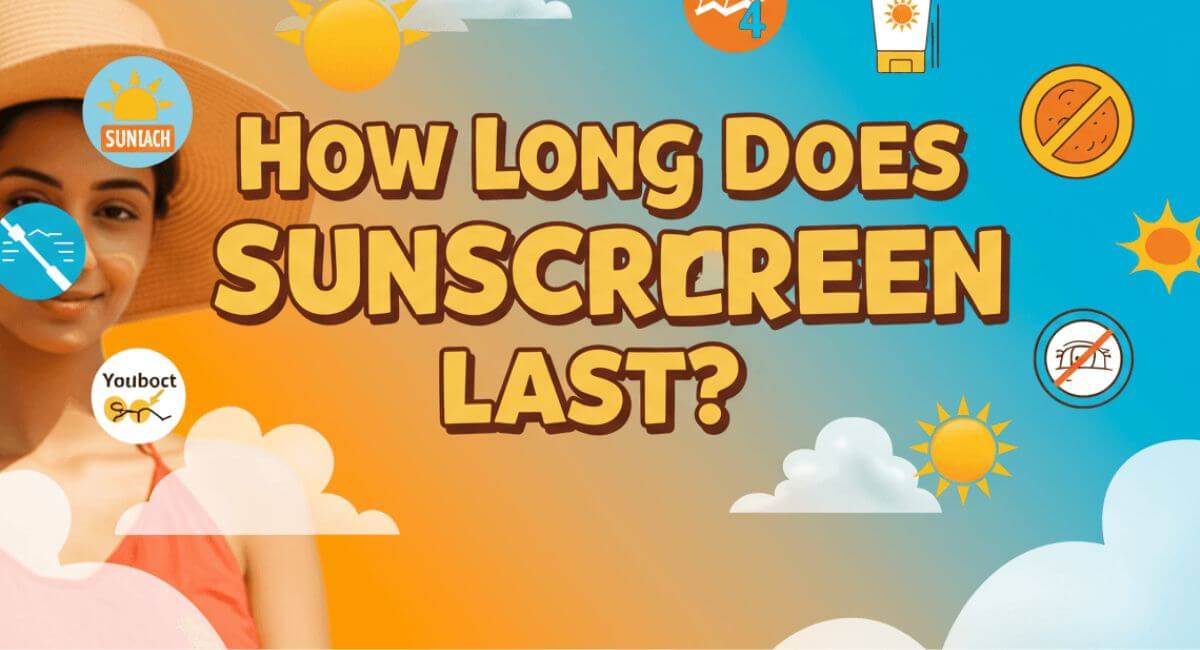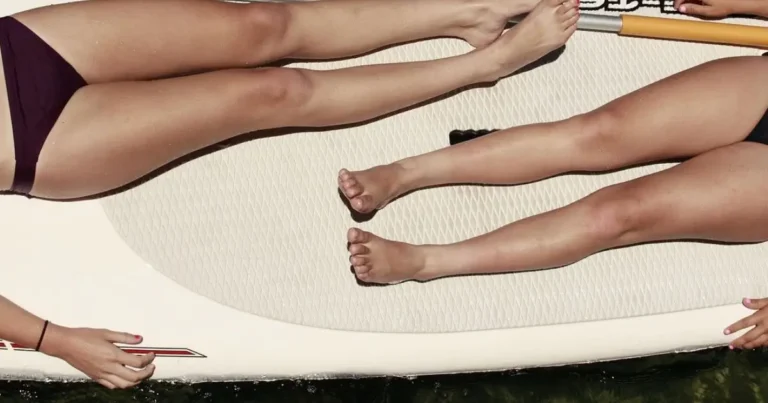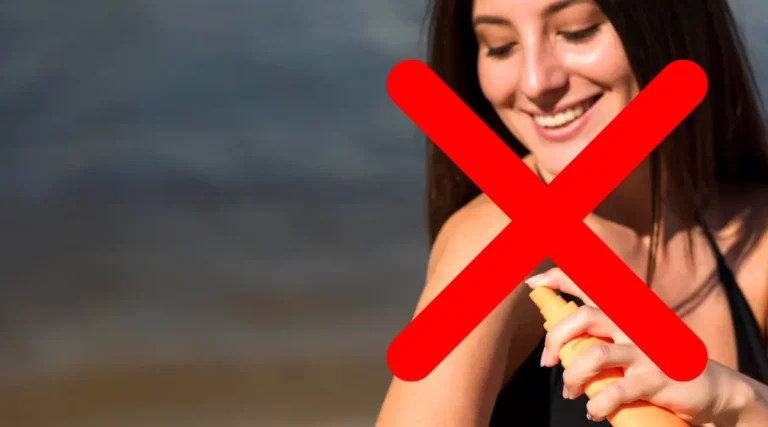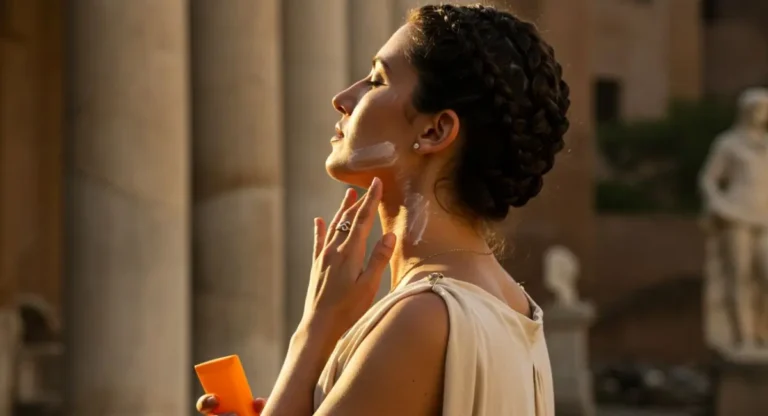How Long Does Sunscreen Last? A Guide to Staying Protected in 2025
Table of Contents
Sunscreen is key to avoiding sunburn and skin damage. But How Long Does Sunscreen Last? This guide will help you understand its effectiveness. You’ll learn about application tips and when to reapply.
Things like sweat, water, and sun exposure can reduce sunscreen’s effectiveness. Find out how to choose the right product and avoid mistakes. This guide makes it easy to pick the right SPF and stay safe all day.
Key Takeaways
- Sunscreen effectiveness fades after 2 hours, even if you’re not sweating or swimming.
- Check the expiration date on the bottle—expired products lose protective power.
- Water-resistant formulas need reapplication every 40 to 80 minutes during water activities.
- SPF 30 or higher blocks more UV rays but still requires regular reapplication.
- Store sunscreen in a cool, dry place to keep it active longer.
Understanding Sunscreen Durability
Sunscreen durability is about how well it keeps protecting you over time. The active ingredients in sunscreen are crucial. Zinc oxide and avobenzone create a shield against UV rays. They must stay on your skin to block harmful radiation.
Key factors shaping durability include:
- Ingredient stability: Physical blockers like titanium dioxide last longer than some chemical filters.
- Water resistance claims: Look for products labeled “water-resistant” for extended protection during swimming or sweating.
- Skin type compatibility: Oily skin may break down sunscreen faster than dry skin.
“A sunscreen’s longevity depends on its ability to withstand environmental stressors without degrading,” explains Dr. Emily Carter, a dermatologist specializing in photoprotection.
Chemical sunscreens absorb UV rays but may degrade faster in sunlight. Physical (mineral) options sit on the skin’s surface, offering longer-lasting protection until physically wiped off. Sweat, friction from clothing, and prolonged sun exposure all test this durability. Knowing these factors helps you pick the right sunscreen for your activities and skin type.
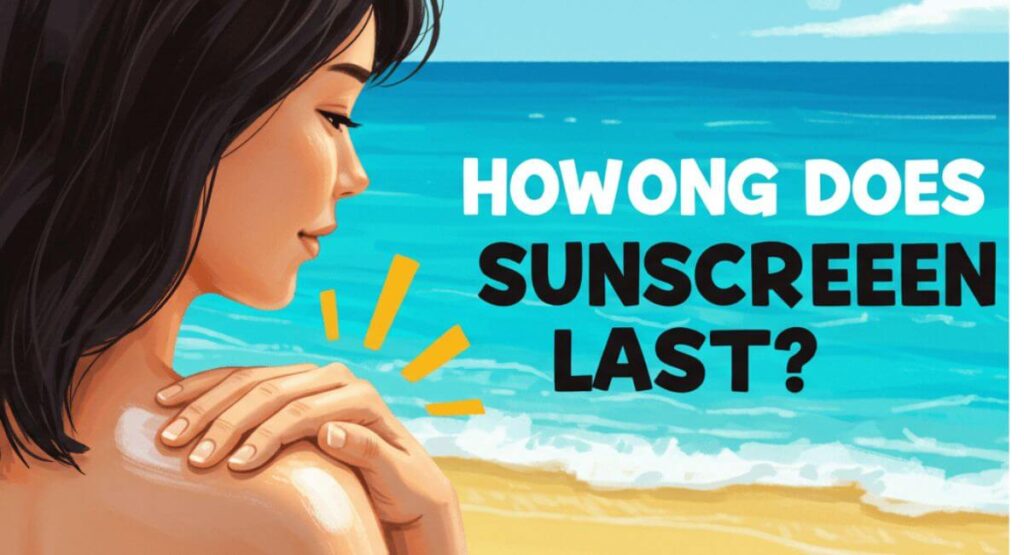
How Long Does Sunscreen Last on Your Skin?
The question how long does sunscreen last on skin is more than just about SPF. Your body and the environment around you also play a big role. Let’s look at what really matters.
Factors Influencing Sunscreen Longevity
Your skin type and how you apply sunscreen affect how long it lasts. Here are some important points:
- Skin Type: Oily skin may break down sunscreen faster than dry skin, reducing effectiveness.
- Application Amount: Use at least a shot glass-sized layer to achieve labeled SPF. Skimping cuts protection time.
- Product Type: Physical (mineral) vs. chemical sunscreens may adhere differently—check labels for water-resistance claims.
External Conditions and Their Impact
Environmental factors can shorten the clock on your sunscreen’s shield:
- Sweating: Perspiration washes off sunscreen, especially during exercise. Reapply every 40–80 minutes as directed.
- Water Exposure: Swimming or hot tubs strip sunscreen faster. Look for “water-resistant” formulas for prolonged activity.
- Sun Intensity: Peak UV hours (10 AM–4 PM) mean sunscreen degrades quicker. Combine it with hats and shade for extra defense.
“The real lifespan isn’t just about the clock—it’s a mix of skin, product, and environment,” says Dr. Emily Chen, board-certified dermatologist.
Understanding these variables helps tailor your routine to match your lifestyle. The keyword how long does sunscreen last on skin varies, but following these factors ensures you stay safe under the sun’s rays.
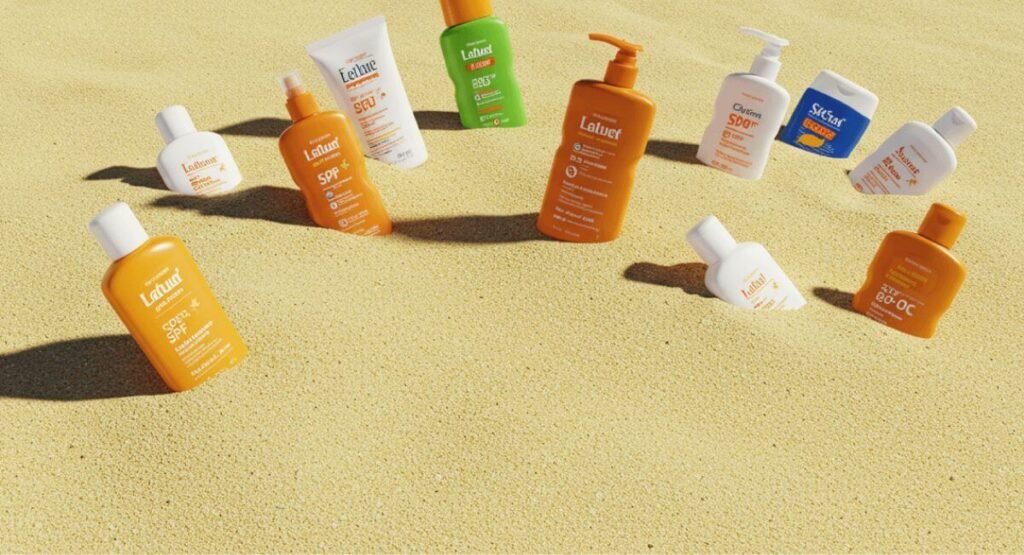
Choosing the Right Sunscreen for Your Needs
Finding the right sunscreen means knowing about size and protection levels. Let’s look at the important factors to help you choose.
8 oz Sunscreen: What You Need to Know
An 8 oz sunscreen bottle like Hawaiian Tropic Everyday Active Lotion Sunscreen SPF 30 is great for families. But how long does it last? You need about 1 ounce every two hours for reapplication. An 8 oz bottle can last around 16 applications if used right.
But, how long it lasts depends on:
- Body size (more coverage needs more product)
- Outdoor activity levels (sweating or swimming requires reapplication)
- Storage conditions (opened sunscreen degrades faster if not stored properly)
Comparing SPF Ratings for Better Protection
SPF ratings show how well a sunscreen blocks UVB rays. Here’s a comparison:
| SPF Level | UVB Blocked | Best For |
| SPF 15 | 93% | Short outdoor activities |
| SPF 30 | 97% | Daily use, moderate sun exposure |
| SPF 50+ | 98%+ | Extended sun exposure, sensitive skin |
No SPF blocks 100% of rays. Always reapply every 2 hours, even with higher ratings. The right SPF balances protection with your lifestyle.
Maximizing Sunscreen Effectiveness
Getting the most from your sunscreen is more than just applying it. Follow these steps to ensure it works well, giving you full protection.
Proper Application Techniques
How you apply sunscreen is just as important as what you use. Here’s a simple routine for better results:
- Use a shot glass-sized amount for full-body coverage. Most people use too little, which reduces effectiveness.
- Apply 15–30 minutes before going outside. This lets it form a protective layer before sun exposure.
- Reapply every 2 hours, even if the label says “water-resistant.”
Tips to Enhance Absorption and Duration
Small changes can make a big difference in how long sunscreen lasts. Try these tips:
- Exfoliate skin gently beforehand to remove dead cells. This helps sunscreen stick better.
- Moisturize dry areas like elbows first. This creates a smoother base for the sunscreen.
- Layer sunscreen under clothing for extra UV protection in high-exposure zones.
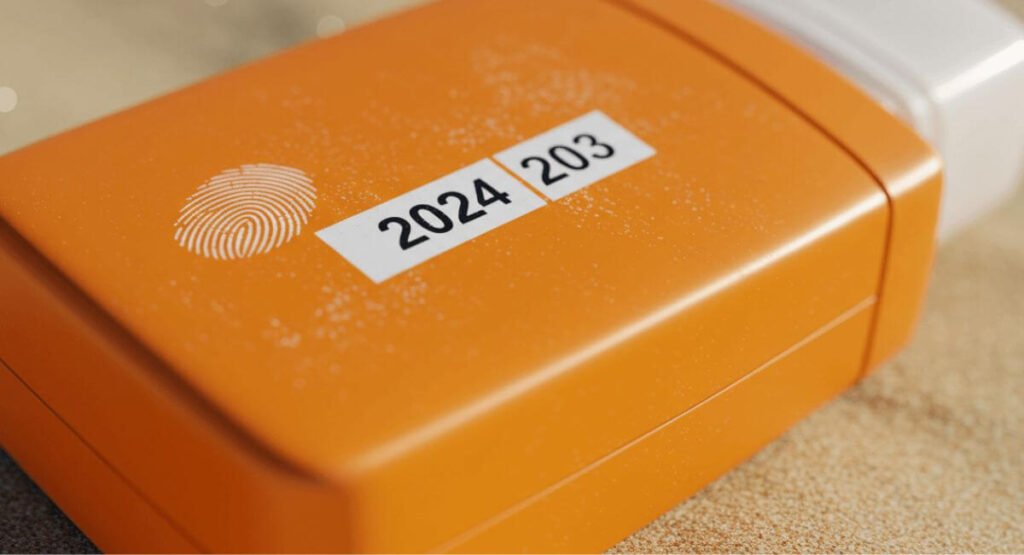
Common Mistakes to Avoid
Even small mistakes can weaken sunscreen’s effectiveness. Be careful of these:
- Ignoring reapplication after swimming or sweating, even with waterproof formulas.
- Applying over damp skin—sunscreen needs dry skin to form a proper barrier.
- Storing sunscreen in hot places like cars, which can degrade active ingredients faster.
Addressing Special Conditions and Concerns
Extreme heat, sweat, or water can shorten sunscreen’s effectiveness. Even SPF 50 sunscreen needs adjustments to stay effective. Let’s look at how different situations affect protection.
How Long Does SPF 50 Sunscreen Last in Extreme Conditions?
In intense UV light, like hiking or beach days, how long does SPF 50 sunscreen last depends on reapplying. Without touch-ups, its protection drops quickly. Waterproof formulas resist sweat and water but need reapplying after 40-80 minutes of activity.
Weather and Water: Key Factors in Sunscreen Efficacy
- High humidity: Can reduce sunscreen’s adhesion to skin, causing it to wash off faster.
- Direct sunlight: Prolonged exposure breaks down sunscreen’s chemical barriers over 2 hours.
- Water exposure: Swimming or sweating dissolves sunscreen, even if labeled “water-resistant.”
“SPF 50 isn’t a permanent shield. Reapplying every 2 hours—sooner after swimming—keeps UV rays at bay,” advises Dr. Lisa Nguyen, a dermatologist at DermCare Clinics.
Adjust your routine based on activity. For example, apply sunscreen 30 minutes before sun exposure. Use a hat in windy conditions to help maintain barriers against UV damage. Always prioritize reapplication—your skin’s defense relies on it.
Maintenance and Reapplication Strategies
Keeping your skin protected from the sun is an ongoing task. It’s important to reapply sunscreen to keep your skin safe from UV rays all day. Here’s how to do it easily without making it too complicated.
How Often to Reapply Sunscreen
Here’s a simple schedule to keep your skin covered:
- Reapply every two hours without fail, even if you feel dry.
- Immediately after swimming or sweating heavily, regardless of water-resistant claims.
- After towel-drying, as friction removes existing layers.
| Time Frame | Action |
| Every 2 hours | Full reapplication |
| Post-water exposure | Reapply even if labeled water-resistant |
| After towel-drying | Spot-treat exposed areas |
Recognizing When Protection Wanes
Look out for these signs your sunscreen’s protection is wearing off:
- Sweat or water visibly pooling on skin
- More than two hours since last application
- Unprotected skin feeling warm or sun-sensitive
“Consistent reapplication is non-negotiable—your skin’s barrier weakens over time,” notes Dr. Michael Torres, a skincare specialist at DermCare Institute.
Conclusion
Your skin’s safety is more than just sunscreen. You need to reapply every two hours to keep it strong against UV rays. Look for SPF 30 or higher, like Neutrogena or Coppertone, for better protection.
Don’t forget to check the expiration date. Old sunscreen doesn’t protect as well, leaving your skin at risk.
Sweat or water can remove sunscreen quickly. So, apply again right after swimming or drying off. Make sure to use enough sunscreen on all exposed skin.
Don’t skip areas like legs or shoulders. UV light can harm these spots if they’re not covered.
Knowing how to use sunscreen is crucial. Follow the brand’s advice on storage and reapplying. Sunscreen is a daily habit, not just a one-time thing.
Choosing the right sunscreen and using it every day helps protect your skin. These simple steps are essential for keeping your skin healthy.
FAQ
How long does sunscreen last once applied?
Sunscreen usually lasts between two to four hours. This depends on your skin type, the environment, and how much you apply. Always reapply after swimming, sweating, or drying off with a towel.
How long does sunscreen last on your skin?
Sunscreen’s effectiveness on your skin can change. Generally, it works for about two hours before needing a new application. Your skin type, the sunscreen’s formula, and outside conditions like humidity and sweat can affect this time.
What about SPF ratings? Do they affect how long sunscreen lasts?
Yes, SPF ratings do affect how long sunscreen lasts. Higher SPF means more protection from UVB rays. But, you still need to reapply every two hours or sooner if you’re swimming or sweating. For example, SPF 50 offers 50 times more protection than no sunscreen, but it still needs regular reapplication.
How long does an 8 oz sunscreen bottle last?
An 8 oz sunscreen bottle can last up to two weeks for daily use by an average adult. But, this can change based on how you use it and how much you apply.
How long does SPF 50 sunscreen last under harsh conditions?
SPF 50 sunscreen offers strong protection, but it can lose effectiveness in extreme conditions like intense sunlight or water. You should reapply every one to two hours in these situations to keep protected.
Do I need to apply sunscreen even on cloudy days?
Yes, you should apply sunscreen on cloudy days. Up to 80% of UV rays can pass through clouds. Sunscreen works the same in any weather, so always follow the reapplication guidelines.
Can I use sunscreen on my face and body interchangeably?
While you can use the same sunscreen on your face and body, there are products made just for your face. They might feel lighter and are less likely to cause breakouts. If you have sensitive skin or specific skincare needs, consider a facial sunscreen.
Author’s Top Sunscreen Picks
- Can You Tan with Sunscreen? The Truth About Safe Sun Exposure
- The Best Polarized Sunglasses for Your Needs: Why Sunglasses Are Essential for Sun Protection (Beyond Fashion!)
- Best Natural Sun Protection for Every Skin Type in 2025 (No Sunscreen Needed!)
- Can You Tan with Sunscreen? The Truth About Safe Sun Exposure

